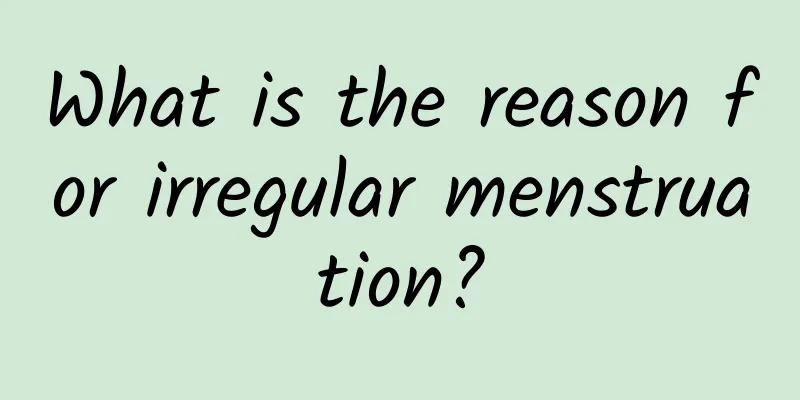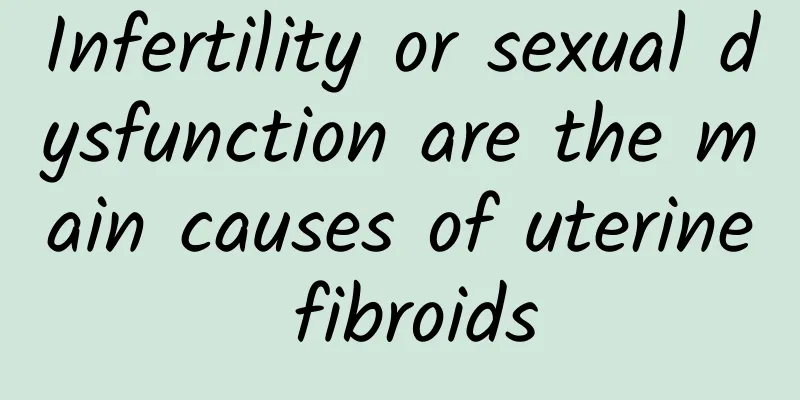Why do uterine fibroids grow on the posterior wall? What should I do if uterine fibroids grow on the posterior wall?

|
Uterine fibroids are a common benign tumor in women. They can grow anywhere in the uterus, including the anterior wall, posterior wall, and intramural wall. But why do some people find that their uterine fibroids grow on the posterior wall? This is a question that many female friends often ask. We need to understand why uterine fibroids form. Uterine fibroids are formed by abnormal proliferation of muscle cells that make up the endometrium. Their occurrence is related to multiple factors, including genetics, hormones, and lifestyle habits. Changes in hormone levels play a vital role in the growth of uterine fibroids. When estrogen levels are too high, uterine fibroids may grow faster, while when hormone levels are low, their growth may slow down or even stop. So why do some people's uterine fibroids grow on the back wall? This may be related to the location of the uterine fibroids and the internal anatomical structure of the uterus. The uterus is an inverted pear-shaped organ. Under normal circumstances, the back of the uterus near the waist is the back wall of the uterus. In this place, the growth space of uterine fibroids is relatively large and will not be easily oppressed and restricted by the outside world, so it is easier to grow. When women find that their uterine fibroids grow on the back wall, they should take appropriate measures. First, it is recommended to have a gynecological examination in time to confirm whether it is a uterine fibroid, and to further understand the size and location of the tumor, and whether it has caused discomfort to the body. If the tumor is small and asymptomatic, the doctor may choose to observe and monitor the growth of the tumor at any time. If the tumor is large or symptoms occur, such as irregular menstruation, heavy menstruation, abdominal pain, etc., then further treatment measures may be needed. There are two treatment methods for uterine fibroids: conservative treatment and surgical treatment. Conservative treatment mainly regulates hormone levels and uses medication to inhibit tumor growth. Surgical treatment may include myomectomy, uterine fibroid enucleation, etc. Depending on the size and location of the tumor, the doctor will choose the most suitable surgical method and comprehensively consider factors such as the patient's age and fertility concept. The purpose of surgical treatment is to completely remove the tumor and protect the patient's uterine function. The location of uterine fibroids is the result of many factors, including hormone levels, genetics, and the internal anatomical structure of the uterus. If you find that your uterine fibroids grow on the back wall, you should seek medical attention in time and take appropriate treatment plans. Regular gynecological examinations are very important to detect and treat them early and protect women's health. Uterine fibroids are one of the common benign tumors in women. Their formation is related to many factors such as genetics, hormone levels and lifestyle habits. Uterine fibroids grow in various locations, including the anterior wall, posterior wall and intramural. Why do some people's uterine fibroids grow on the posterior wall? This is related to factors such as the location of the uterine fibroids and the internal anatomical structure of the uterus. When a woman finds that her uterine fibroids grow on the posterior wall, she should seek medical attention in time, undergo a gynecological examination, and choose an appropriate treatment method according to the size and location of the tumor. Conservative treatment and surgical treatment are common treatment methods, the purpose of which is to completely remove the tumor and protect women's health. Regular gynecological examinations are very important for the early detection and treatment of uterine fibroids. |
Recommend
How to treat moderate cervical erosion
How to treat moderate cervical erosion? Cervical ...
Vulvar leukoplakia can become cancerous
Grandma Jia is 61 years old. Since more than 40 y...
What examinations should be done before uterine fibroid surgery? What preparations should be done before uterine fibroid surgery?
Uterine fibroids are the most common tumors of th...
How to effectively prevent vaginitis in women during menstruation
The menstrual period is a favorable time for vagi...
Can I eat seafood during painless abortion surgery?
You can eat seafood in moderation after painless ...
Three-in-one liposuction for slimming without random folk remedies
Text: Dr. Xu Yongkang According to media reports:...
Briefly explain the knowledge of bacterial vaginosis
In real life, more and more female friends suffer...
Experts answer whether uterine adnexitis affects pregnancy
Whether adnexitis affects pregnancy is a question...
What causes uterine adnexitis?
Due to the special location of the inflammation a...
Is cervical hypertrophy and pelvic effusion serious?
The severity of cervical hypertrophy and pelvic e...
Is it easy to have beautiful legs? 10-minute leg slimming exercise
If you ask people which part of the body is the h...
What should women pay attention to when treating cervical erosion? Women with cervical erosion do not need excessive treatment
If you have symptoms, you should check them out; ...
Experts remind people not to blow dry the hair after abortion. There are three dangers of blowing dry the hair after abortion.
You should not be exposed to the wind for at leas...
Can women with chronic cervicitis and HPV get pregnant? Patients with chronic cervicitis must pay attention to these before pregnancy
In life, it is not difficult to find that many wo...
What should we pay attention to in the treatment of vulvar leukoplakia in daily life?
The treatment of vulvar leukoplakia needs to star...









